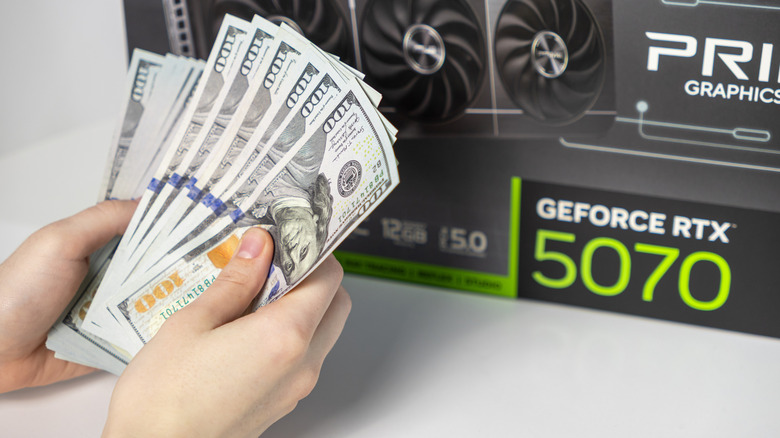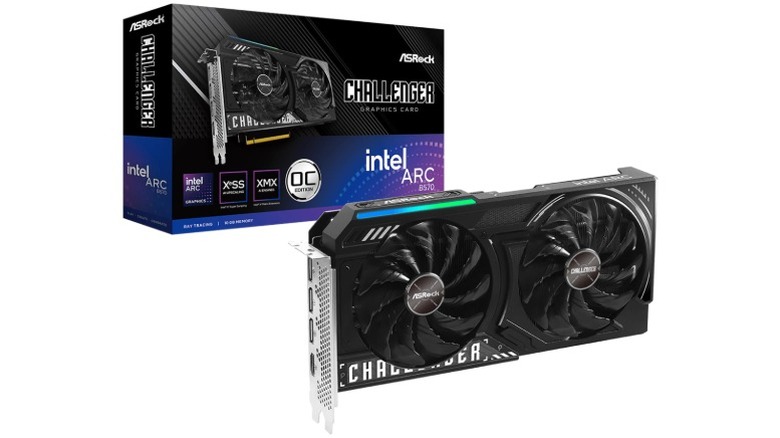5 Of The Best Gaming GPUs For Every Budget
Upgrading your graphics card is never as simple as finding one that fits in your budget and adding it to your cart. You have to factor in performance, variants of the same card, upscaling technology, the amount of Video Random Access Memory (VRAM), and price. As someone heavily involved in PC hardware, I can tell you that the most important thing is real performance at real prices. Many graphics cards on the market are difficult to find at the recommended list price (MSRP), and manufacturer claims aren't based on your system, so you must be extra cautious.
There's also a VRAM dilemma these days, which is why many other PC hardware experts recommend avoiding 8GB graphics cards for intensive 1440p gaming. The modern gaming landscape, with its high-resolution textures and ray-tracing glory, demands more. That doesn't mean you have to go over budget to get good framerates. You just have to set realistic expectations and understand what sort of performance you're looking at across different price tiers. So yes, while this write-up is a list of the best graphics cards across various budgets, it will also help you understand what to look for in each price range.
Intel Arc B570 ---Under $300
Intel's dedicated graphics cards have improved significantly. Looking at the numbers on paper, budget offerings such as the Arc B570 and B580 can offer value compared to their AMD and Nvidia counterparts. Pricing-wise, Nvidia's RTX 5050 and AMD's RX 9060 XT 8GB are the closest competitors to the Intel Arc B570, and Intel wins in the VRAM department.
Tom's Hardware's review of the RTX 5050 found the Nvidia card faster than the Intel Arc B570, but not by a significant margin. The RTX 5050 averaged 67 FPS at 1080p Ultra settings, while the Arc B570 averaged 60 FPS. AMD's 9060 XT 8GB was significantly ahead with an 83 FPS average, but it is the most expensive card of all three, often sold near $300.
What you should expect from the Arc B570 is solid 1080p performance for under $250. TechPowerUp's review showed that the card was able to output 127 FPS in Doom Eternal at 1080p, which is good performance for a fast-paced shooter. An older comparison of the RTX 3070 and RX 6800 from Techspot showed how limiting 8GB can be in certain scenarios. The 10GB Arc B570 could age better than the 8GB RTX 5050. Both cards sell at around the same price, but the B570 has a lower MSRP ($220 vs $250). There's also the Intel Arc B580, which offers 12GB of VRAM and even better performance. However, that card is hard to find for under $300, at the time of writing.
AMD Radeon RX 9060 XT 16GB -- $350 - $400
The Radeon RX 9060 XT 16GB is AMD's answer to Nvidia's RTX 5060 Ti, and it packs a lot of punch for a mid-range card. While Nvidia's DLSS 4 has FSR 4 upscaling beat in many ways, the 9060 XT offers a lower price, similar raw performance, and improved ray tracing results compared to its predecessor. Techspot's review showed an average of 70 FPS at native 1440p, while the 5060 Ti 16GB averaged 71 FPS.
The 16GB 9060 XT costs around $400 at the time of writing, making it competitive with the 8GB 5060 Ti ($380 MSRP) and the 16GB version ($430 MSRP). Between all three cards, AMD's offering is the better value. If you play at 1080p, you can extract even more performance out of the 9060 XT. Techspot's review showed an average of 98 FPS at 1080p and demonstrated a high refresh rate for competitive games like Black Ops 6.
With 16GB of VRAM, the 9060 XT will comfortably handle the high-quality textures and built-in ray tracing that's seen in many modern games. It's not a card that will run every game at maximum settings with ray tracing enabled, but it will get you those high framerates you're looking for on a budget. It's also one of the few Radeon cards you can get for close to MSRP, most of the time.
Nvidia GeForce RTX 5070 -- $500 - $600
At the time of writing, both the Radeon RX 9070 and 9070 XT suffer from inflated pricing, and they have been incredibly hard to find at MSRP since launch. Unless you find one of those AMD cards under $600 — or, realistically, under $700 — for the 9070 XT, you should be looking at the RTX 5070. While it only has 12GB of VRAM compared to its AMD competitors, it still delivers respectable performance for under $600.
In TechPowerUp's review, the RTX 5070 managed an average of 114 FPS at 1440p. Coupled with Nvidia DLSS 4 and frame generation, that sort of performance shows that the 5070 should be capable of handling any game at 1440p with respectable settings. A comparison between the 5070 and AMD RX 9070 showed that the RTX 5070 was only 8% slower on average. Factor in inflated pricing for the Radeon cards, and that performance difference becomes much less important.
Unfortunately, even spending close to $600 won't get you close to a comfortable 4K gaming performance, especially with ray tracing and ultra settings thrown into the mix. That's mainly because a lot of games require more than 12GB at the 4K resolution, and using frame generation only further increases the VRAM requirement. This is one of the few downsides of the otherwise great RTX 5070, a card that would be even better if it were a 16GB GPU.
Nvidia GeForce RTX 5070 Ti -- $750 - $900
If you find yourself in a situation where you can get an AMD Radeon RX 9070 XT for close to its MSRP of $600, the RTX 5070 Ti at $750 can be a tough sell. TechSpot's comparison between the 9070 XT and 5070 Ti showed that the two have nearly identical performance at 4K. As such, you should get whichever one of them is cheaper. In an ideal world, the cheaper card would be the 9070 XT, but it's often overpriced enough to approach 5070 Ti pricing.
This pricing situation is confusing, but the bottom line is that if you're going to pay nearly $800 for either of these cards, you should get the 5070 Ti. DLSS 4 is supported in more games, and the image quality is better than FSR 4. If you care about streaming, Nvidia's NVENC encoder provides excellent image quality at lower bitrates, though AMD has been catching up in that regard.
Based on the gaming performance, the 5070 Ti might just be the high-end graphics card that most people should buy. The pricing is much more reasonable than the RTX 5080, and Techspot's tests showed that it's a capable 4K card. You sadly still won't be playing every game at maximum settings with path tracing, but frame generation and upscaling will definitely help bridge the gap.
Nvidia GeForce RTX 5080 -- $1000 and beyond
Costing anywhere between $1000 and $1300 at the time of writing, the RTX 5080 isn't the most practical card. This is especially true considering how many PC gamers prefer 1080p over 4K. But for those of you who want incredible graphical fidelity without the performance hit, the RTX 5080 is the card to buy — unless you have even more disposable income, then you might even justify an RTX 5090.
In TechPowerUp's review, the RTX 5080 averaged 95 FPS at 4K. Ray tracing results were also spectacular, and the only cards that performed better in that regard were the RTX 4090 and 5090. In the same test, the RTX 5080 saw a 17% improvement over its predecessor, the RTX 4080. That's not quite the most impressive generational performance gain, but at least the 5080 is cheaper than the 4080 was at its launch. Because of its great 4K performance, this card will also pair nicely with modern OLED ultrawide monitors.
However, while this card is a great performer in most games, it's not a great value. Again, real-world pricing can approach $1300, and that's not a reasonable price to pay for what is ultimately a card with only 16GB of VRAM. The VRAM won't be a limiting factor in most games, but just know you're paying top dollar for a card that Nvidia could have futureproofed with more VRAM.
Methodology
Recommending a graphics card is never a simple choice. The savvy consumer must consider real-world pricing, real performance (even with upscaling), and long-term value. A majority of games these days feature built-in ray tracing and high-resolution textures, and VRAM is a critical consideration. This is why you won't find an 8GB card in this post, as those are cards you should only be looking at for low-end or Esports gaming.
It was also important to get an idea of the true cost-per-frame for each card, factoring in real-time retail prices and benchmark numbers. This gives us a realistic view of each GPU's true price-to-performance. All recommendations in this article are based on cross-referencing verified performance benchmarks from trusted reviewers such as TechSpot and Tom's Hardware. The writer also drew on testing experience with these similar graphics cards.






